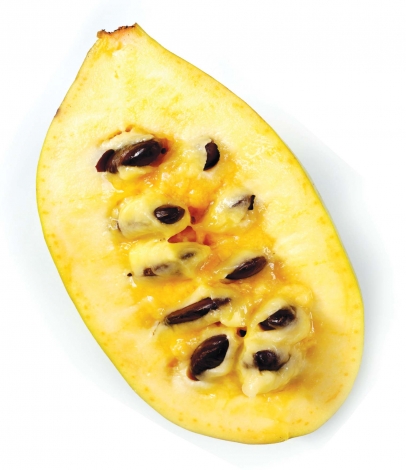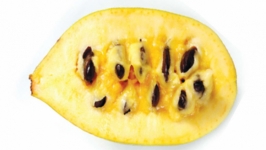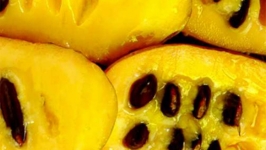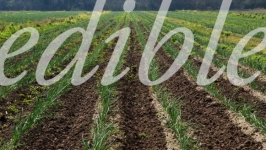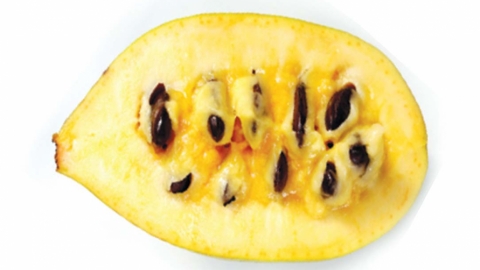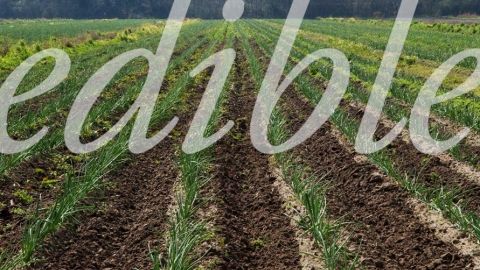Pawpaws
Pawpaw: A native fruit brimming with benefits
It may come as a surprise that a tropical-tasting fruit like the pawpaw (Asimina triloba) grows right here in New Jersey. The fruit, though nearly the size of a mango, is not easy to find, yet has a flavor that’s hard to forget.
“The pawpaw is a member of the custard apple family, [which includes many] species of plants typically found in tropical regions, and known for their large, pulpy fruits,” says Randi Eckel of Toadshade Wildflower Farm in Frenchtown. Pawpaw trees themselves do not grow in the tropics, but in the Midwest and northeastern U.S. and Canada—with New Jersey and Pennsylvania making up their easternmost reach, partially due to our warming climate.
Eckel describes the fruit as tasting like banana custard. “The best way to eat a pawpaw is to slice it in half and scoop out the pudding-like fruit with a spoon,” she says. “Reserve the large, dark seeds, and plant them to help wild populations continue.” Eckel explains that pawpaw grows in colonies comprised of a single grove, all dependent on one origin tree. “It’s not too often you’ll find it growing in the wild,” she says. However, people are having success planting it in their landscape or home gardens, for good reasons.
“It’s not advisable to forage wild stands of rare species because it’s a disservice to the wildlife populations that depend on them. Instead, pick from trees purposely planted for consumption,” she says, adding that growing your own pawpaw also increases the chances of enjoying the fruit at its peak. Fall is the best time to enjoy pawpaw in New Jersey as the fruit fully ripen in September and October.
“You won’t find them in grocery stores or farmers’ markets because they are very soft, bruise easily, and therefore are very hard to store,” Eckel says. “You can tell they are ripe when they’re soft enough to have fallen off the tree, or into your hand with minimal effort when picked,” she says, adding that the best place to find pawpaw saplings is at your local native plant nursery.
“YOU CAN TELL [PAWPAWS] ARE RIPE WHEN THEY’RE SOFT ENOUGH TO HAVE FALLEN OFF THE TREE, OR INTO YOUR HAND WITH MINIMAL EFFORT WHEN PICKED.”
While the appeal of the pawpaw tree is its fruit, it also plays an interesting (and essential) role when it comes to native pollinators.
“What’s interesting about pawpaw’s burgundy flowers is that the color mimics carrion to attract pollinators that are typically decomposers, like beetles and flies,” says Mary Ann Borge, founder of Lambertville Goes Wild. “In addition, the pawpaw is the only larval food plant for the zebra swallowtail. Encouraging pawpaw populations helps build wildlife corridors that can extend the range and habitability of this unique butterfly species.”
Beyond providing a healthy food source and habitat, the pawpaw offers some sweet health benefits for those lucky enough to enjoy them.
“Pawpaw packs nearly 20% of your daily value of vitamin C in just under four ounces,” says Robin DeCicco, holistic nutritionist with the Graf Center for Integrative Medicine at Englewood Hospital. “Vitamin C helps fight against free-radical damage by slowing the oxidization of cells, and also helps with the absorption of iron,” of which pawpaw also provides a good source.
Pawpaw also contains nutrients that benefit bone health, including manganese.
“Minerals like copper, zinc, magnesium, and manganese all contribute to healthy bones,” says DeCicco. “Manganese, when combined with other minerals like zinc and copper, helps with the formation of bone collagen, which is the ‘glue’ that holds our bones together, and provides strength, elasticity, and structure,” she says. “Many people (especially older women) experience osteoporosis or osteopenia, which can be brought on by a deficiency in manganese. Therefore, the more foods we eat that contain it, the healthier our bones will be in the future.”
So keep your eyes peeled for this unique and nutritious native fruit. Save the seeds, grow a tree, and perhaps over time it will become a more common food for both people and pollinators to enjoy.


